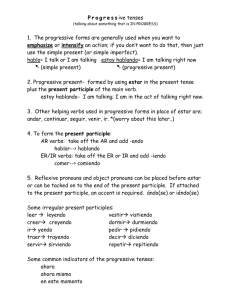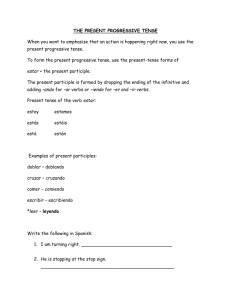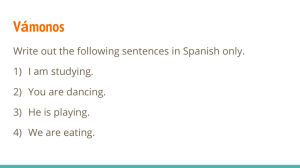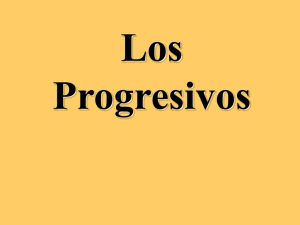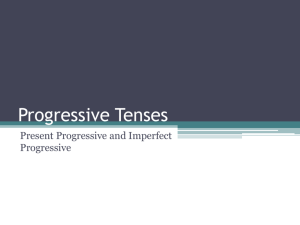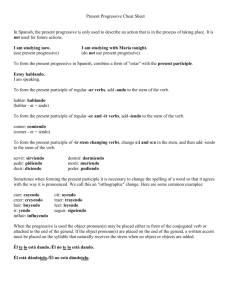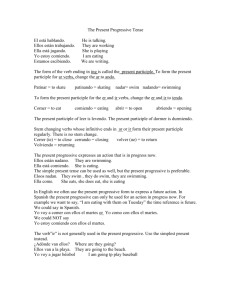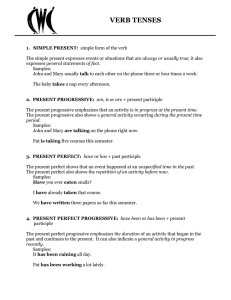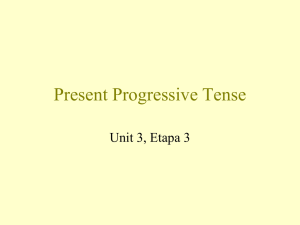Present Progressive Tense Notes
advertisement
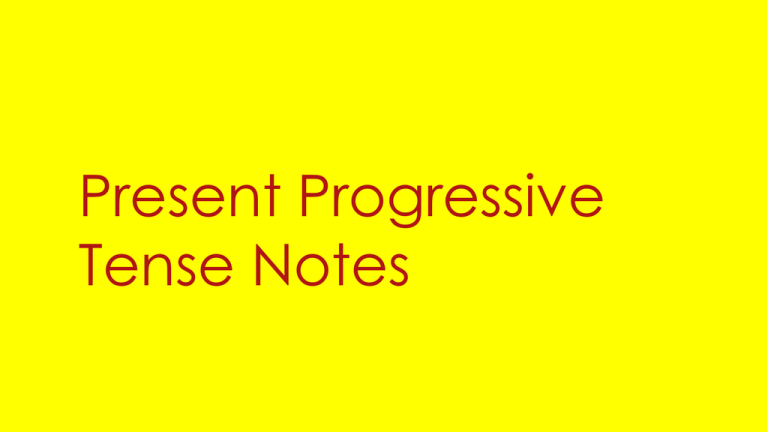
Present Progressive Tense Notes To form the present progressive, conjugate the verb estar to agree with the subject of the sentence, and follow it with the present participle. Yo estoy Tú estás Él está Nosotros estamos Ellos están The present participle is the English "-ing" form of a verb. How to form the present participle of regular verbs: 1: drop the infinitive ending (-ar, -er, -ir) 2: add –ando for –ar verbs and –iendo for –er/-ir verbs Let’s practice conjugating to the present participle. -ar verbs Hablar hablando Cantar cantando Trabajar trabajando -er, -ir verbs Comer comiendo Beber bebiendo Compartir compartiendo Now we form the present progressive by using the verb “estar” followed by the participle. Ex: I am talking He is eating Yo estoy hablando. Él está comiendo When to use it In English, present progressive can be used to describe what is happening now, or what will happen in the future. I am studying now. I am studying with María tonight. In Spanish, the present progressive is only used to describe an action that is in the process of taking place. It is not used for future actions. I I am studying now.(use present progressive) am studying with María tonight. (do not use present progressive) IMPERFECT PROGRESSIVE Use the imperfect progressive to say what someone was doing. Use the verb “estar” in the imperfect followed by the participle. Yo estaba Tú estabas Él estaba I was talking. He was eating. Nosotros estábamos Ellos estaban Yo estaba hablando. Él estaba comiendo. Ella Marcos Yo Ellas Nosotros Ellos
